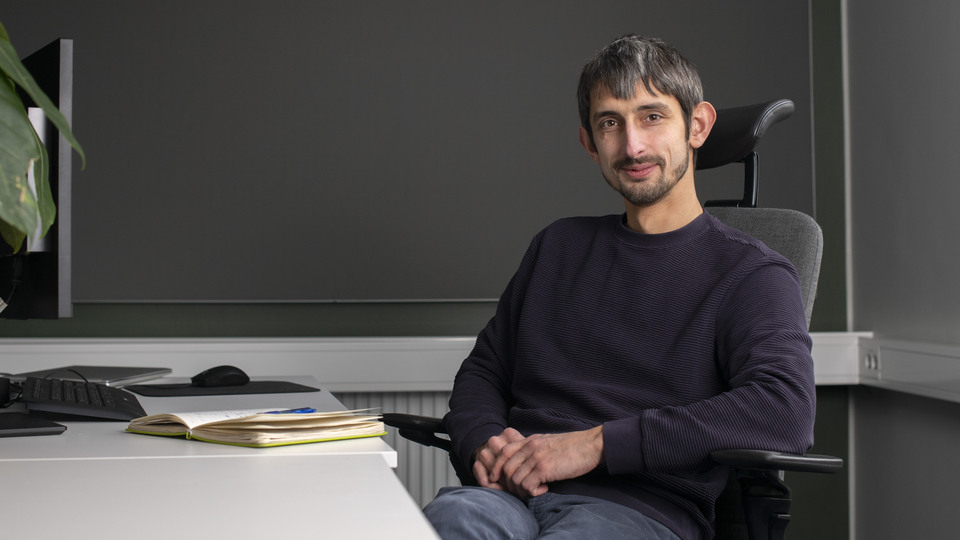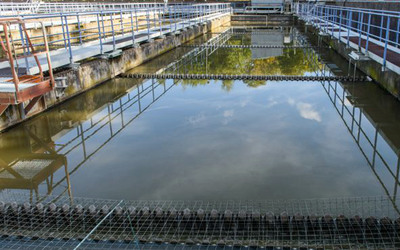
We will see more treatment of PFAS-contaminated water in the future
Foam fractionation, nanofiltration, ozonation, ion exchange, pulverized or granulated activated carbon. There are several different techniques for separating PFASs, and they are under constant development. The PFAS experts at IVL are driving the technology forward with the help of test pilots.
It is possible to completely separate PFASs, but this requires a combination of technologies and is very costly. There is still no single technology that removes all types of PFASs
, says Andriy Malovanyy, a researcher at IVL Swedish Environmental Research Institute.
In collaboration with Swedish and international research teams, companies and industry actors, IVL is testing and developing the treatment of PFAS-contaminated water. This usually involves wastewater and leachate from landfill sites. Wastewater treatment plants receive large volumes of wastewater and stormwater, and in the water leaving the plant, a concentrate of PFASs develops.
This makes wastewater treatment plants - perhaps undeservedly - a PFAS hotspot. However, there are even higher PFAS concentrations in leachate from landfills and in contaminated surface and groundwater from fire training sites. For this reason, working with these emission sources generates the greatest benefit.
PFAS treatment an unexplored area

Wastewater treatment plants are a hotspot for PFASs
PFAS treatment of leachate, but especially municipal wastewater, is still a very unexplored area. For many years, pharmaceutical treatment and, more recently, nitrogen treatment have been prioritized. PFASs have only recently started to appear on the agenda
, says Andriy Malovanyy.
Nor have there been any legal requirements for PFAS treatment, other than for drinking water through the Swedish National Food Agency's action limit of 90 nanograms per litre. Only a few plants in Sweden have carbon filters as a final step in municipal wastewater treatment plants, but this is mainly aimed at separating pharmaceutical residues and only partially captures PFAS.
In recent years, however, PFASs have emerged as a potentially increasing environmental and health problem, and regulations are now beginning to be tightened, not least in the EU. At the beginning of the year, Sweden was one of the countries that proposed a total ban on PFASs in the EU. The EU has also decided on a new drinking water directive with a limit value of four nanograms of PFASs per litre, which is now being implemented in Swedish legislation.
Can be broken down into smaller PFAS compounds
The decisions that are now being rolled out in the EU and in Sweden will lead to both technical measures to prevent spread, and more treatment of PFAS-contaminated water, says Andriy Malovanyy.
But it is also important to know which substances are most important to separate. If you focus on only the four most common PFASs, the so-called PFAS 4, separating only 50 per cent is of great benefit, although the best would of course be complete separation.
PFAS 4 includes the currently banned substances PFOA and PFOS. When these break down, they can form smaller molecular chains that can also be harmful. Therefore it is important to ensure that the PFASs separated from water are safely destroyed and do not form other potentially toxic fluorinated substances.
Experiment-orientated approach
Today, around 25 people at IVL work with PFAS in various ways, including laboratory and analysis, environmental permits, risk assessment and technology development with test pilots.
We are very experiment-orientated, not least with the treatment steps. We constantly try to be at the forefront of method development and the latest in research. Hopefully we will be able to contribute to the development of technology that is not so expensive.
In the long term, Mr Malovanyy hopes for certification of PFAS degradation during incineration.
Ensuring that PFASs actually break down is less challenging than capturing them from the environment in a cost-effective way. But it is important that we actually succeed in destroying the PFASs we capture. Otherwise it is not certain that the environmental benefits of treatment and destruction will be as great as we hope.
